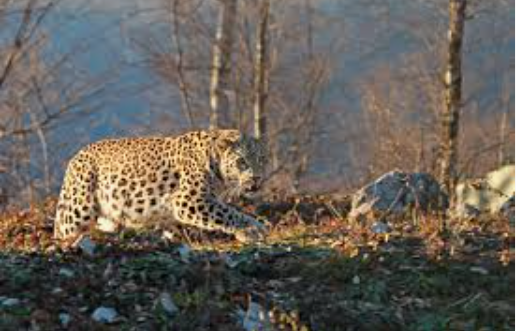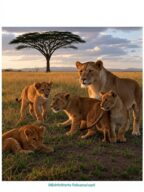
Iran is home to a diverse range of wild cats, owing to its varied ecosystems, which include deserts, forests, mountains, and grasslands. Several species of wild felids are native or have historically roamed the region, with some facing significant conservation challenges.
Wild Cat Species in Iran
Persian Leopard (Panthera pardus tulliana):
The Persian leopard is the largest wild cat in Iran and one of the largest leopard subspecies globally. It inhabits diverse habitats, including the Alborz and Zagros mountains, forests, and semi-arid areas.
Population estimates suggest 550–850 individuals in Iran, making it a critical stronghold for the species, as Iran hosts about 65% of the global population.
Conservation status: Endangered (IUCN Red List). Threats include habitat loss, poaching, and human-wildlife conflict. Conservation efforts involve protected areas like Golestan National Park and Tandoureh National Park.
Asiatic Cheetah (Acinonyx jubatus venaticus):
Critically endangered, the Asiatic cheetah is now found only in Iran, primarily in the central deserts like the Dasht-e Kavir and Touran Biosphere Reserve.
Once widespread across Asia, its population in Iran is estimated at fewer than 50 individuals (possibly 12–20 as of recent surveys). The last known sighting in the wild was reported in 2022, with some sources suggesting the species may be functionally extinct in the wild.
Threats include habitat fragmentation, prey depletion (e.g., gazelles), and road accidents. Iran has initiated conservation programs, including captive breeding, though success has been limited.
Caracal (Caracal caracal):
A medium-sized cat with distinctive tufted ears, the caracal is found in arid and semi-arid regions of Iran, including steppes and deserts.
It is elusive and less studied, but its population is considered stable compared to larger cats. It preys on small mammals, birds, and reptiles.
Conservation status: Least Concern, though local threats include habitat degradation.
Eurasian Lynx (Lynx lynx):
Found in northern Iran, particularly in the Alborz Mountains and Hyrcanian forests, the lynx prefers forested areas with ample cover.
It is a solitary predator, feeding on deer, hares, and smaller mammals. Its population in Iran is small and understudied.
Conservation status: Least Concern globally, but locally threatened by habitat loss and poaching.
Pallas’s Cat (Otocolobus manul):
A small, fluffy cat adapted to high-altitude steppes and rocky terrains, found in eastern Iran, particularly in the Khorasan region.
It is nocturnal and preys on small rodents and pikas. Its population is sparse, and it is rarely sighted.
Conservation status: Near Threatened, with threats including habitat disturbance and prey decline.
Sand Cat (Felis margarita):
A small, desert-adapted cat found in Iran’s arid regions, such as the Dasht-e Kavir and Lut deserts.
It is highly elusive, with specialized adaptations like furry paws for navigating hot sand. It feeds on rodents, lizards, and insects.
Conservation status: Least Concern, but data on its population in Iran is limited.
Jungle Cat (Felis chaus):
Also known as the swamp cat, it inhabits wetlands, grasslands, and agricultural areas near water bodies in Iran.
It is adaptable and preys on small mammals, birds, and fish. Its population is relatively stable.
Conservation status: Least Concern.
Wildcat (Felis lybica ornata):
The Asiatic wildcat is widespread in Iran’s steppes, deserts, and scrublands. It resembles a domestic cat but is genetically distinct.
It is adaptable but faces hybridization risks with domestic cats, which threatens genetic purity.
Conservation status: Least Concern.
Conservation Efforts and Challenges
Protected Areas: Iran has established national parks and reserves, such as Golestan, Tandoureh, and Kavir National Parks, to protect wild cat habitats. These areas are critical for species like the Persian leopard and Asiatic cheetah.
Threats: Habitat loss due to agriculture, infrastructure development, and overgrazing is a major issue. Poaching, retaliatory killings by herders, and prey depletion also threaten populations.
Conservation Programs: Iran’s Department of Environment collaborates with international organizations like the IUCN and Panthera to monitor and protect wild cats. Efforts include camera trapping, anti-poaching patrols, and community engagement to reduce human-wildlife conflict.
Asiatic Cheetah Conservation: Specific initiatives, such as the “Conservation of the Asiatic Cheetah Project” (supported by the UNDP), aim to protect cheetah habitats and increase prey populations. Captive breeding programs have been attempted, but no cubs have been successfully reintroduced to the wild.
Cultural and Historical Context
Wild cats, particularly leopards and cheetahs, hold cultural significance in Iran. The cheetah was historically tamed for hunting by Persian nobility, as depicted in ancient art.
The Persian leopard is a symbol of strength and resilience in Iranian folklore and is often referenced in conservation campaigns to foster public support.
Current Status (as of June 2025)
The Asiatic cheetah’s survival is precarious, with recent reports indicating a drastic decline. Conservationists fear it may be extinct in the wild unless urgent action is taken.
The Persian leopard remains Iran’s most prominent wild cat, with stable but fragmented populations.
Smaller cats like the sand cat and Pallas’s cat are less threatened but poorly studied, making population trends uncertain.

* Asiatic Cheetah
